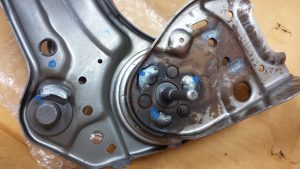Before welding two unwashed metal surfaces together, one should consider two things:
1) was the metal supplied with a rust preventative/mill oil applied to the surface, and
2) was a stamping lubricant applied to the metal surface for processing?

Understanding or identifying the mill oil can help prevent some residue issues as rust preventative films can differ significantly, as can their applied coating weights. A solvent-based rust preventative may leave a “drier”, waxier film whereas an oil-based rust preventative may leave a more fluid, “wet” film behind. The different types of mill oils can have different degrees of water and acid fume resistance, which can inadvertently impact residues along weld seams and the surrounding areas. Oils and waxes do not “burn off” as readily as do the water-based and water-miscible components in oil-free stamping fluids. As such, oil-containing weld residues tend to be more “varnish-like”, water impermeable and tenacious.
Stamping fluids left on parts prior to welding can also effect residues along weld seams and surrounding areas. Emulsifiable-oil stamping fluids run cleaner than straight oil fluids due to the emulsifiers and surfactants used to make them water extendible. Oil-free, synthetic stamping fluids are more akin to “liquid soaps” in nature and can often help penetrate mill oils on part surfaces. These water-based and water-miscible fluids also tend to burn more cleanly than oil-containing fluids and leave behind drier residues that are typically more easily dissolved.
IRMCO strongly recommends that only clean metal surfaces be welded and that all proper safety and ventilation practices be employed at all times.


